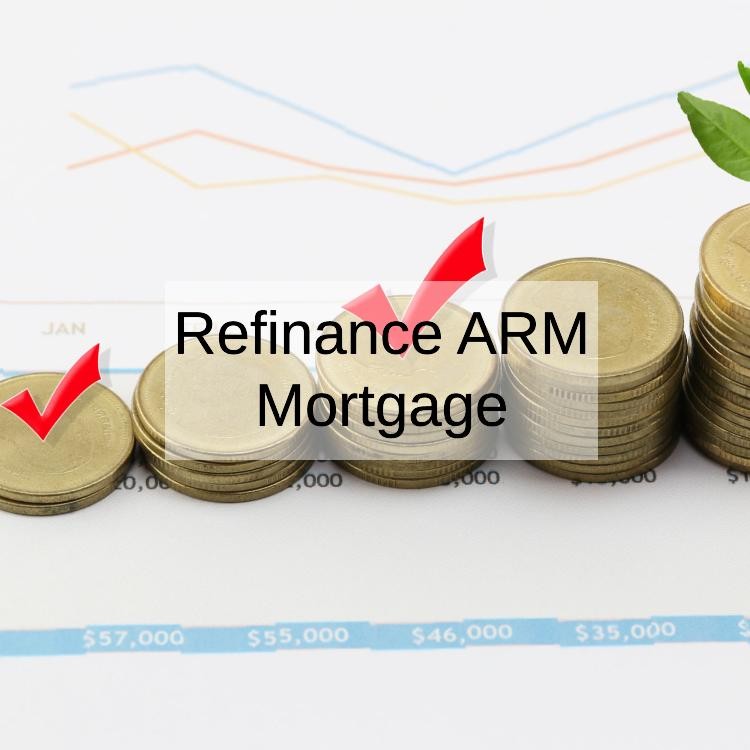Refinancing an adjustable-rate mortgage (ARM) to a fixed-rate mortgage loan rates is a significant financial decision that homeowners often consider to stabilize their mortgage payments and protect against potential interest rate fluctuations. While an ARM offers initial lower interest rates and payments, it carries the risk of rate adjustments over time, leading to uncertainty in monthly payments. In this comprehensive discussion, we will explore the concept of refinancing from an ARM to a fixed-rate mortgage, the benefits and considerations involved, the refinancing process, and factors to weigh before making this transition.
Understanding Adjustable-Rate Mortgages (ARMs)
An adjustable-rate mortgage (ARM) is a types of mortgage loans with an interest rate that adjusts periodically based on market conditions and predetermined terms. Typically, ARMs offer lower initial interest rates and monthly payments compared to fixed-rate mortgages, making them attractive to homeowners seeking lower initial costs and flexibility in the short term. However, ARMs carry the risk of interest rate adjustments, which can result in higher payments and increased financial uncertainty over time.
The Need for Refinancing from ARM to Fixed-Rate Mortgage
Refinancing from an ARM to a fixed-rate mortgage becomes a consideration for homeowners seeking stability and predictability in their mortgage payments. The primary reasons to refinance to a fixed-rate mortgage include:
Protection Against Interest Rate Increases: Refinancing to a fixed-rate mortgage shields homeowners from potential interest rate hikes and ensures consistent monthly payments throughout the loan term.
Long-Term Financial Planning: Fixed-rate mortgages offer certainty and peace of mind, allowing homeowners to budget effectively and plan for long-term financial goals without the uncertainty of rate adjustments.
Stabilization of Housing Costs: With a fixed-rate mortgage, homeowners can avoid the risk of payment shock resulting from significant increases in ARM interest rates, providing stability and predictability in housing costs.
Risk Management: Refinancing to a fixed-rate mortgage mitigates the risk of financial strain and potential foreclosure associated with unaffordable ARM payments following rate adjustments.
Benefits of Refinancing to a Fixed-Rate Mortgage
Refinancing from an ARM to a fixed-rate mortgage loans offers several advantages for homeowners:
Predictable Monthly Payments: Fixed-rate mortgages provide stable monthly payments throughout the loan term, facilitating effective budgeting and financial planning.
Protection Against Interest Rate Fluctuations: With a fixed-rate mortgage, homeowners are insulated from fluctuations in interest rates, providing financial security and peace of mind.
Potential Long-Term Savings: In a low-interest-rate environment, refinancing to a fixed-rate mortgage may result in long-term savings by securing a lower interest rate and locking in favorable terms.
Simplified Financial Management: Fixed-rate mortgages simplify financial management by eliminating the need to monitor interest rate adjustments and anticipate changes in monthly payments.
Considerations Before Refinancing to a Fixed-Rate Mortgage
Before refinancing from an ARM to a fixed-rate mortgage, homeowners should consider the following factors:
Current Interest Rate Environment: Evaluate prevailing interest rates and market conditions to determine whether refinancing to a fixed-rate mortgage offers savings and favorable terms compared to the existing ARM.
Loan Terms and Closing Costs: Compare the terms, closing costs, and fees associated with refinancing to ensure that the benefits outweigh the expenses and justify the decision to refinance.
Financial Goals and Priorities: Assess long-term financial goals, liquidity needs, and risk tolerance to determine the suitability of a fixed-rate mortgage and its alignment with overall financial objectives.
Loan Duration and Equity Position: Consider the remaining loan duration, equity position, and potential impact on monthly payments to assess the feasibility and affordability of refinancing to a fixed-rate mortgage.
The Refinancing Process
The refinancing process from an ARM to a fixed-rate best mortgage loan rates involves several steps:
Assessment of Current Mortgage: Review the terms, interest rate adjustments, and payment structure of the existing ARM to evaluate its suitability and potential risks.
Research and Comparison: Research fixed-rate mortgage options from various lenders and compare interest rates, loan terms, closing costs, and eligibility requirements to identify the most favorable refinancing options.
Application and Documentation: Submit a mortgage refinance application to the chosen lender and provide required documentation, including income verification, credit history, property appraisal, and other relevant financial information.
Underwriting and Approval: The lender evaluates the refinance application, assesses the borrower's creditworthiness and financial stability, and determines whether to approve the refinance request.
Closing and Funding: Upon approval, the borrower signs the loan documents, pays closing costs, and completes the refinancing transaction. The new fixed-rate mortgage replaces the existing ARM, and funds are disbursed accordingly.
Refinancing from an adjustable-rate mortgage (ARM) to a fixed-rate mortgage offers homeowners stability, predictability, and protection against interest rate fluctuations. By transitioning to a fixed-rate mortgage, homeowners can secure consistent monthly payments, mitigate financial risks, and achieve long-term financial stability. However, the decision to refinance requires careful consideration of current market conditions, loan terms, closing costs, and financial goals. By weighing the benefits and considerations and understanding the refinancing process, homeowners can make informed decisions that align with their financial objectives and enhance their overall financial well-being.














